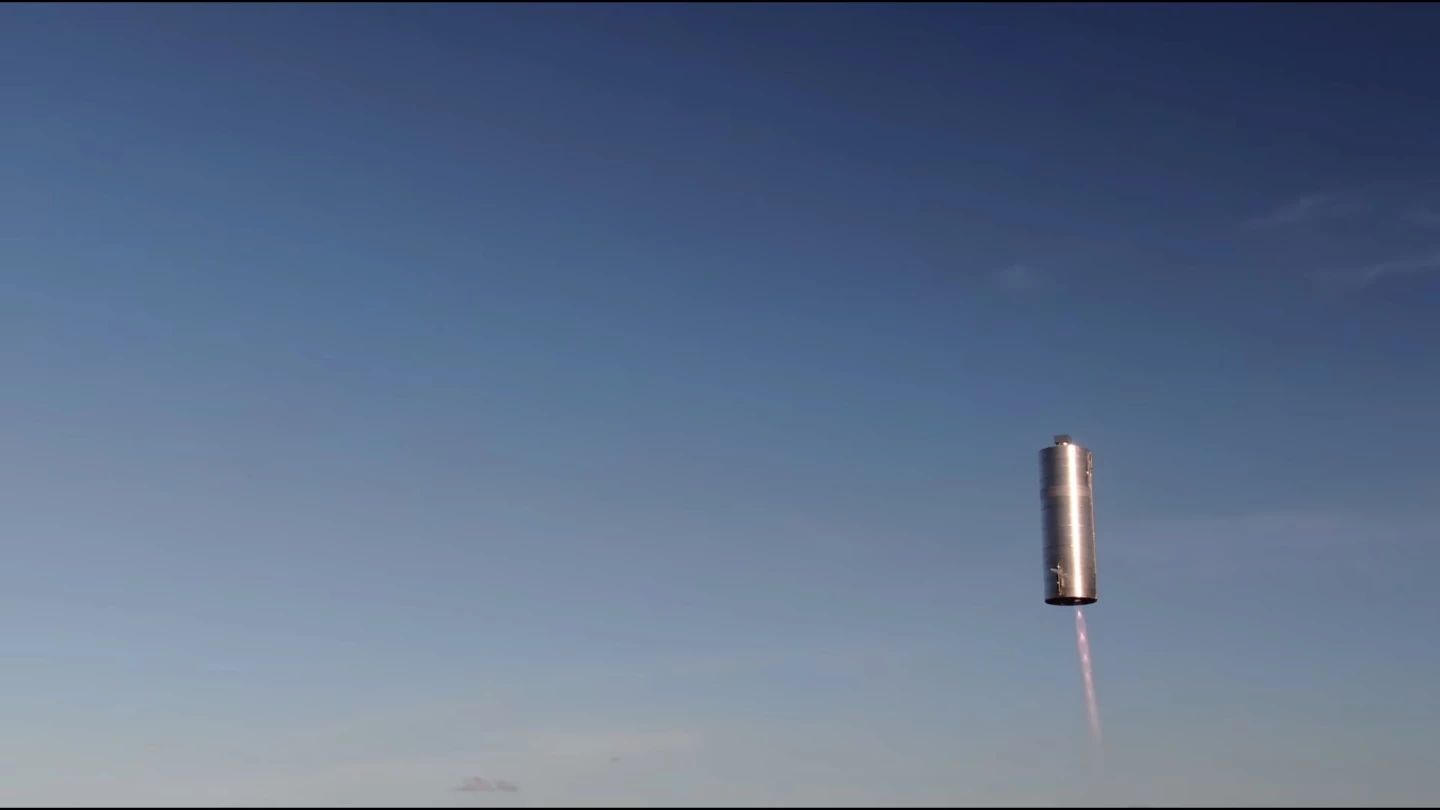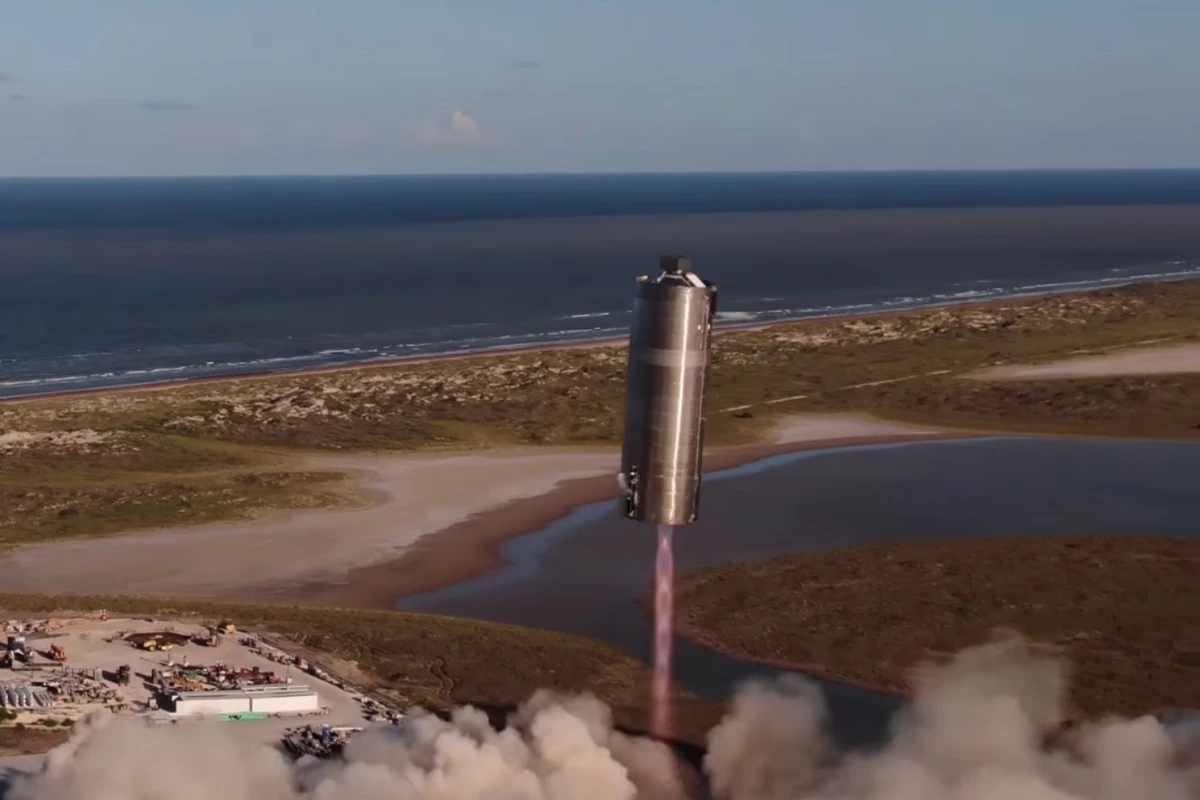While its feats flying astronauts to and from the International Space Station rightly generate a lot of the headlines, the SpaceX team has been busily working on the vehicle that could take humans well past this point in low-Earth orbit. Development of this Starship spacecraft continues at the company’s Boca Chica site in Texas, where the team just performed a 150-meter (500-ft) hop test of a full-size prototype.
The Starship is the next-generation spacecraft that SpaceX hopes to use to transport people to Mars, and which first took to the skies as a small prototype called Starhopper last year. The latest version, known as Starship SN5, is something much closer to the final version, save for the lack of the nosecone fairing that will carry its payload.
In its current form, the Starship therefore looks like a clean-cut section of giant metal piping, although packed inside is one of SpaceX’s Raptor engines. The final design for the vehicle will use several of these methalox staged-combustion engines to blast into space, but for now it’s all about baby steps.
For today, the single engine was enough to lift the Starship SN5 to an altitude of 150 meters over its Texas test facility, where it hovered for a few seconds before coming safely down to land.

These types of hopper tests are a standard and critical part of the research and development process for SpaceX engineers. Long before its Falcon 9 rockets began to launch and safely return to land with incredible success and reliability, early first-stage prototypes performed hop tests that started small and reached higher and higher altitudes over time.
SpaceX will hope that its Starship program can follow a similar path. Today’s flights are a significant step forward from the small-scale Starhopper flights conducted last year, with CEO Elon Musk seemingly happy with the rate of development taking place, declaring that “progress is accelerating” in response to one Twitter user.
Progress is accelerating
— Elon Musk (@elonmusk) August 5, 2020
Musk went on to say that the next steps for the Starship program involve several more short hops to “smooth out launch process” before body flaps are attached and it is taken to higher altitude.
You can watch today’s hop test below.






